- 1880s
- 1940s
- 1950s
- 1960s
- 1970s
- 1980s
- 1990s
- 2000s
- 2010s
- 1880s
Early Beginnings
With SSE’s roots reaching back to the 1880s, these early years see pioneering activity across the UK which shaped the way the energy industry looks today from a waterwheel in Godalming to power generating monks at a Benedictine Abbey at Fort Augustus.
Image: Carbon arc lamp 1896


Initial sparks
SSE’s roots are in small local electricity undertakings in the 1880s, many years before the National Grid, large power stations and domestic supply came into existence.
Electric trams and lighting were seen, though in only a few places and with the latter in the form of carbon arc lamps, sizzling, and flickering in railway stations and on street lamps. It was said by some that the electric light would never catch on in the home.
Image: Carbon arc lamp 1896

First customers
In the late 1870s Godalming became the first town in Britain to receive a public electricity supply. The power source? A waterwheel. A similar project was undertaken in Greenock which was Scotland's first hydro-electric installation for public supply.
The first project of this nature in the highlands was established at the Benedictine Abbey at Fort Augustus on the southern banks of Loch Ness. The monks used a hydro-electric turbine to power their electric organ and the surplus energy was used to power homes in the nearby village. This initiative was enjoyed by both the monks and villagers for over 50 years.
Image: Godalming plaque commemorating first electric lamp install
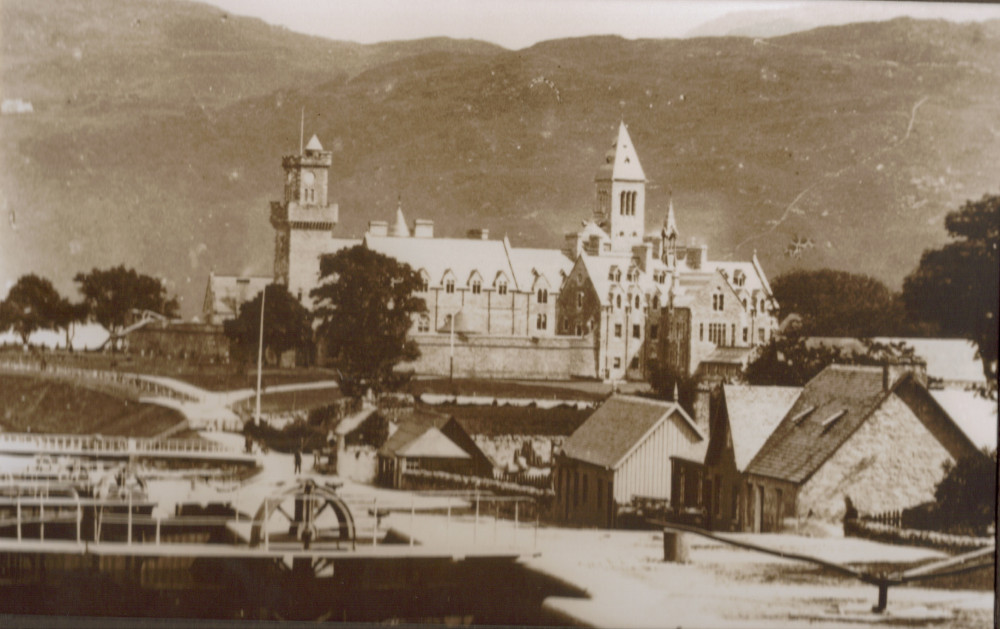
The grid is established
These successes were not isolated and after several successful Acts of Parliament, the Scottish Electricity Grid was established, and the National Grid began operation. Combined, a national 132kV system was fully operational across both grids by the late 1930s.
Image: Benedictine Abbey at Fort Augustus
- 1940s
Dawning of a new era
Against the backdrop of World War II, Churchill’s Secretary of State for Scotland, Tom Johnston, is the driving force behind bringing power to the Glens while in England the nationalisation of energy supply in 1947 brings opportunities to expand business.
Image: Tom Johnston, Morar opening ceremony 1945

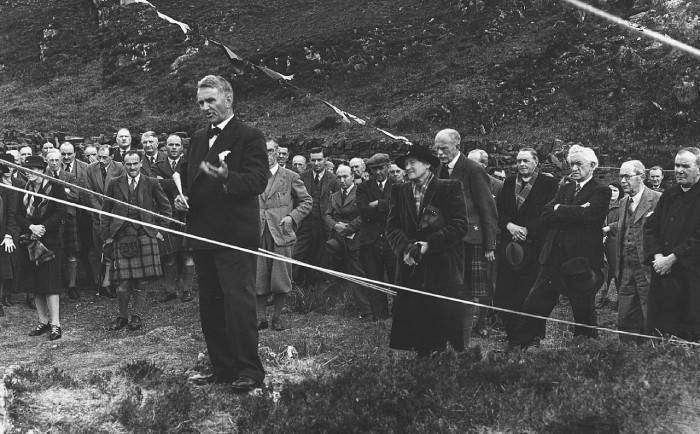
North of Scotland
As part of Churchill's wartime Cabinet, Tom Johnston set up a Council to consider Scotland's post war challenges, one of the largest of which was lack of electricity to homes and industry in the Highlands. This meant that Highlanders returning from the war would be forced to find work in the central belt of Scotland where electric power was enabling industry to thrive.
Image: Tom Johnston, Morar opening ceremony 1945

Powering the North
The Hydro-Electric Development (Scotland) Act of 1943 called the North of Scotland Hydro-Electric Board (NoSHEB) into existence and, under Johnston's stewardship, the newly appointed NoSHEB undertook an intense programme of construction.
It was responsible for the generation, transmission, and distribution of electricity in the North.
Image: North of Scotland Hydro Electric Board crest

South of England
Meanwhile, in England, the nationalisation of the electrical supply industry was set out in the Electricity Act 1947, resulting in 14 regional electricity boards. This led to the establishment of the British Electrical Authority (BEA), the central body responsible for generating and distributing electricity to these regional boards.
Image: Southern Electricity Board logo

Network expansion
The Southern Electricity Board (SEB) was formed as a result of this Act and Henry Nimmo was appointed Chairman. One of the first tasks of the Board was to establish an HQ, with suitable premises being found in Berkshire, in the form of Woolley Hall, a handsome example of the English country house.
In the Board's first year, more than 40,000 new customers were connected to supply, and this rate of network expansion continued throughout next decade.
Image: Woolley Hall, Southern Electricity Board’s HQ
- 1950s
A sustained period of growth
Where the 1940s had centered on planning and a time of rebirth, the 1950s prove to be a time of considerable growth and change for both the North of Scotland Hydro Electric Board and the Southern Electric Board.
Image: The Queen and Tom Johnston at the opening of Sloy power station 1950


North of Scotland
As the North of Scotland Hydro-Electric Board (NoSHEB) reached its 10th anniversary it had celebrated the official opening of its first hydro power station, Sloy, by Her Majesty the Queen.
Image: The Queen and Tom Johnston at the opening of Sloy power station 1950

Bolstering Hydro-Electric
The Board's portfolio had almost 400,000kW of operational hydro-electric plant; 400,000kW of capacity was under construction and another 300,000kW of generating capacity was in planning. Some 9,500 men were employed across the various hydro projects to enable all this to happen.
Image: Sloy tunnellers
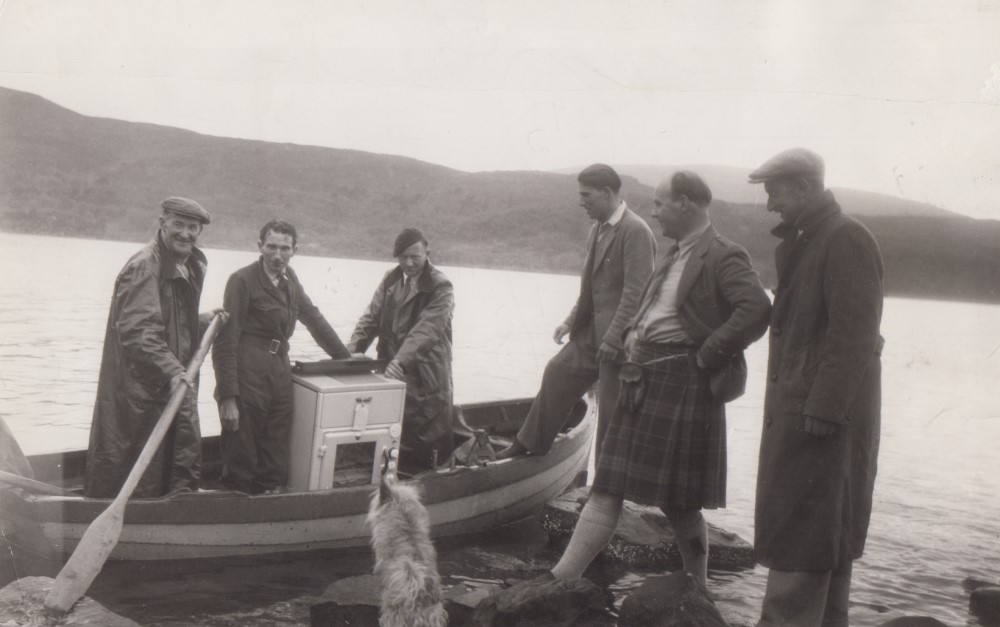
Electricity for all
By 1953, there were more than 300,000 electricity consumers in the North of Scotland and by 1955, 50% of farms and crofts had mains supply. This was a huge increase from 1948 figures where one farm in 14 and one croft in 100 had been connected to the grid.
To demonstrate just how accessible power was to the 1950s home, domestic cookers were being installed at over 10,000 per year.
Image: Cooker delivery to Shieldaig in Wester Ross 1950s
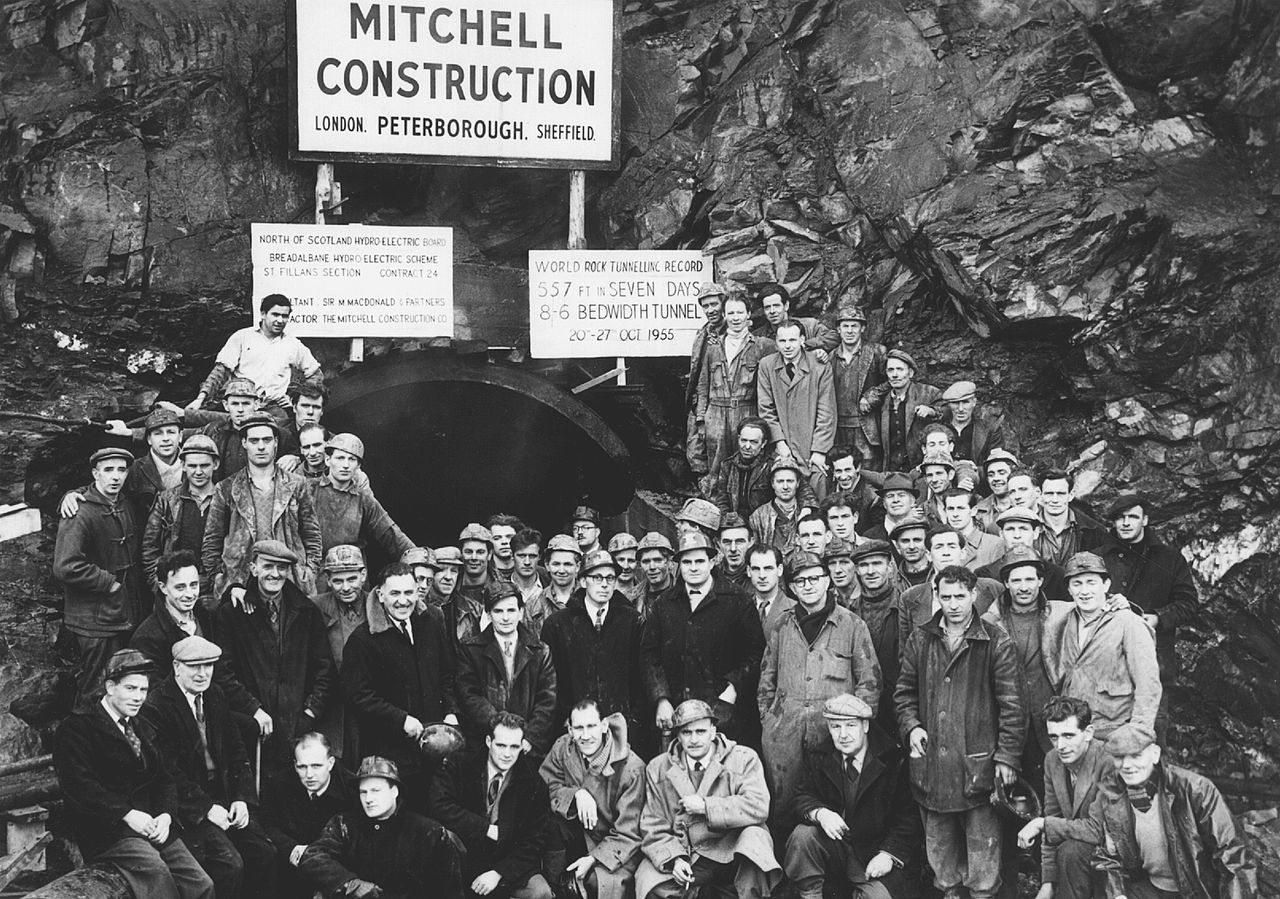
World record achievement
Meanwhile, the main tunnels of the St Fillans section of the Breadalbane hydro scheme were completed in just over 18 months and in doing so, almost 10 miles of tunnels were cut in a single year – the highlight of which was a world record achievement for driving through 557 feet of rock in one week in October 1955.
Image: Tunnelling World record breakers 1955
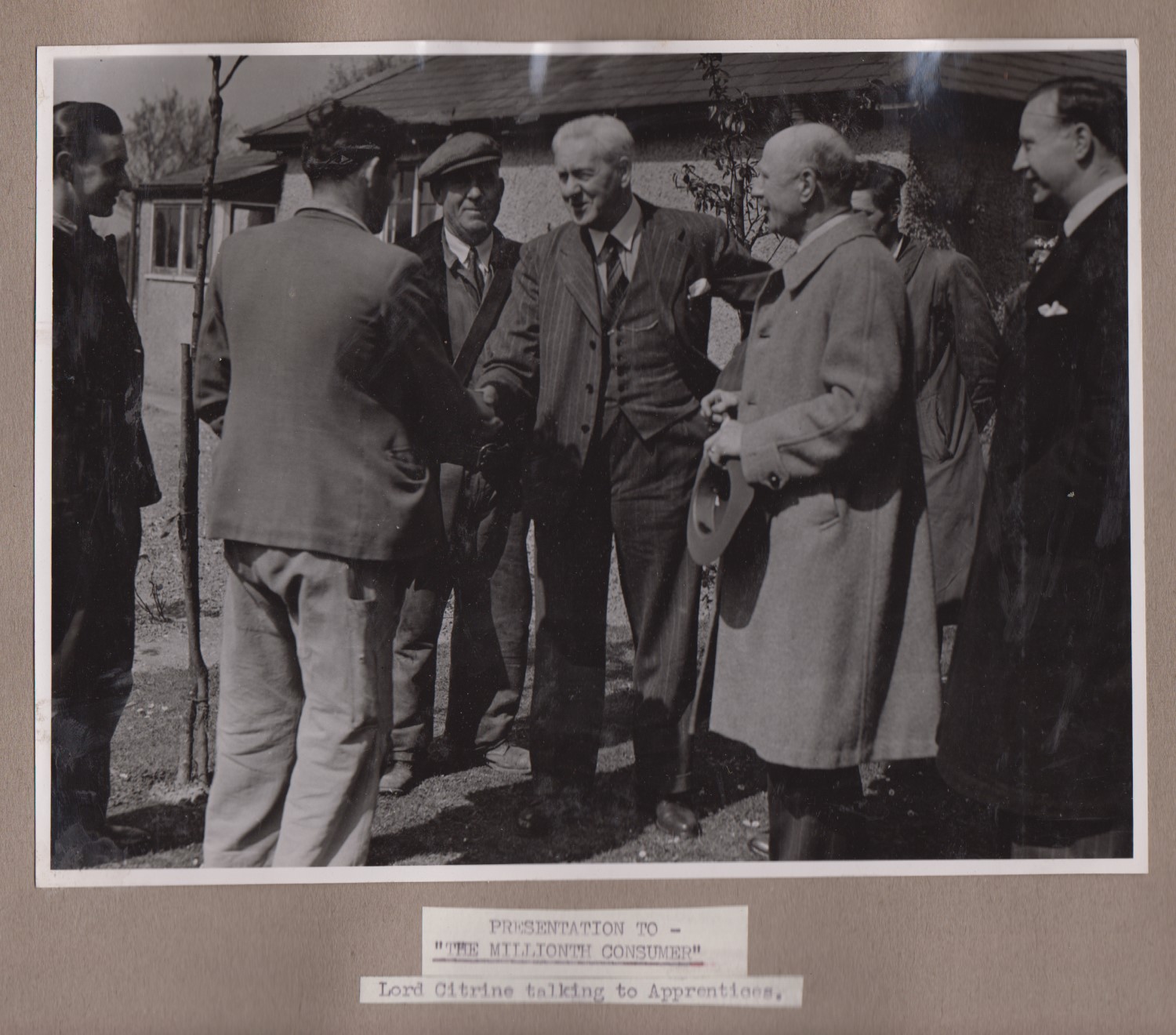
South of England
By the early 1950s the Southern Electric Board (SEB) had connected its millionth consumer and this rate of expansion reached a high point in 1955 when it connected 100,000 consumers in a single year.
Image: Millionth consumer connected to supply
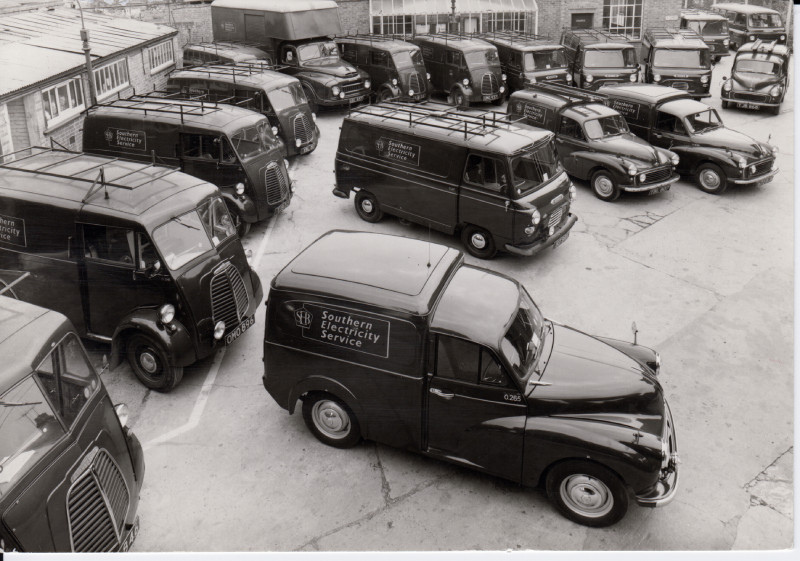
Consumer numbers grow
The same year also saw the promotion of off-peak electric storage heating to the industry allowing more efficient use of generating assets at night.
By the mid-1950s the SEB employed 8,000 engineers, with another 1,800 employed on a contractual basis.
A few years later in 1958, the Board had expanded again and was now operating 23,000 miles of distribution mains. Consumer numbers had also grown in this period with 1,302,948 consumers reported in their Annual Report.Image: Southern Electricity Board fleet of vehicles
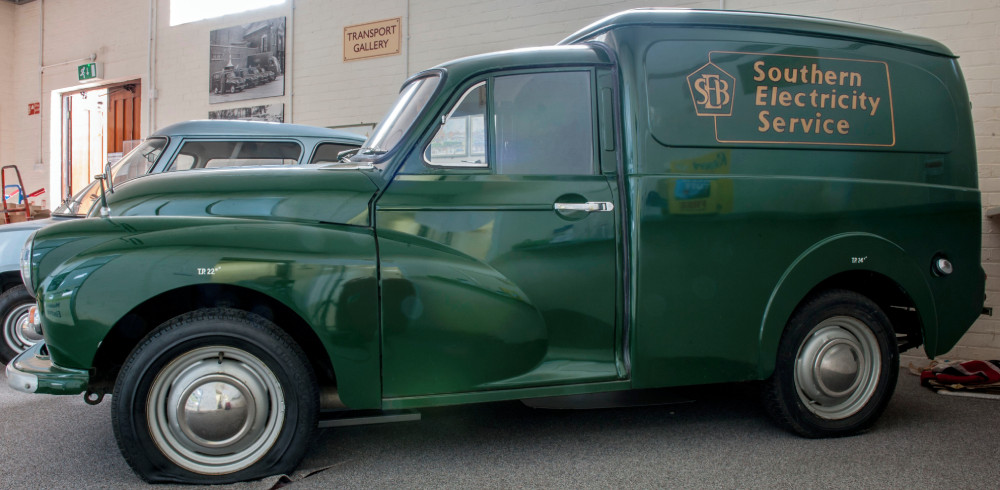
The SEB fleet
Further change arrived during this period when the Board standardised their fleet of vehicles.
The fleet, which to this point was made up of varying models and standards of mechanical soundness had reached 1200, all of which sported a new elegant green livery with the SEB monogram.
Image: New branding on fleet vehicle
- 1960s
Challenges and celebrations
Customer numbers are growing but a period of low rainfall and high winds tests the resilience of electricity networks.
Image: Corie Cas chairlift opening


North of Scotland
The North of Scotland Hydro-Electric Board (NoSHEB) started the decade with below average rainfall, resulting in a heavy reliance from their thermal stations in Aberdeen and Dundee to fill the gap. Good news followed this, with Retail sales reaching £1m; employee numbers stabilising at 3,000, and the connection of the company’s 400,000th consumer!
Image: Corie Cas chairlift opening, Cairngorms
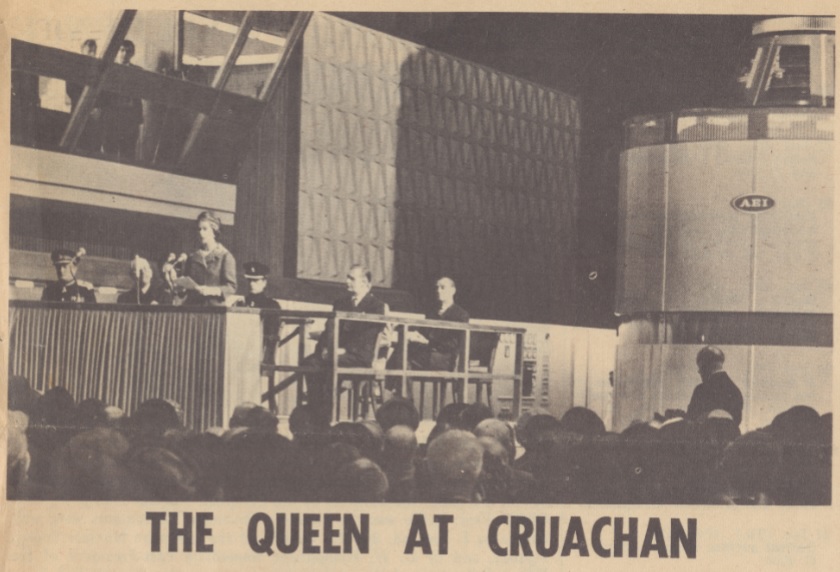
The Queen at Cruachan
Perhaps even more impressive, a Cairngorms ski lift was connected to the main grid; Royals were in attendance for the official opening of the Strathfarrar and Kilmorach scheme and for the first pumped storage scheme at Cruachan's underground power station.
Image: The Queen opening Cruachan power station
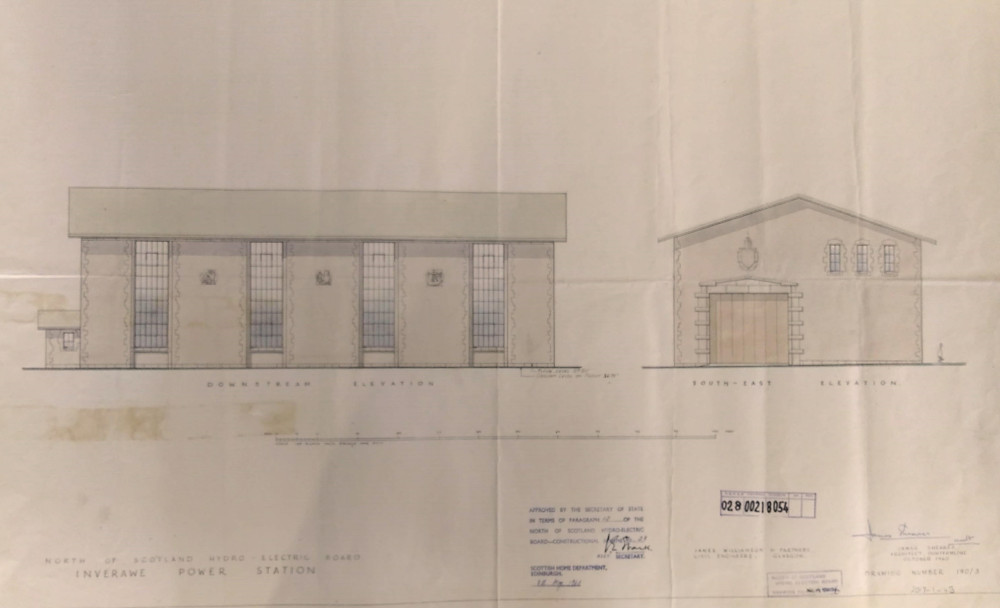
Powering domestic life
Similarly, the Awe schemes’ Nant and Inverawe power stations were in full operation and by 1963, NoSHEB’s hydro capacity passed 1m kW which helped to power 50% of its consumers who were now using electricity to cook.
Image: Original drawing of Inverawe power station

Engaging the public
In January 1968 gusts of 118mph were being recorded in Mull and Tiree as a hurricane battered Scotland. 49,000 consumers were affected – of which 80% were restored in 24 hours.
Later that year NoSHEB celebrated its 25th anniversary by opening 23 of its power stations to the general public for a full week.
Pitlochry dam, power station and fish pass continued to be a huge tourist attraction with over 100,000 walking across the dam annually. To celebrate this, a new permanent exhibition was created at the power station, showcasing the development of power resources and electricity supply in the north of Scotland.
Image: Staff magazine cutting of visitors to Pitlochry exhibition

South of England
In the south, the Southern Electric Board (SEB) completed work on a 132kV line of wooden poles spanning 19 miles. This was the first line to be erected by any Area Board and achieved huge praise.
Celebrations were soon cut short when in 1962 severe weather conditions caused havoc and resulted in a RAF helicopter helping to re-establish supply.
The Board’s retail business continued to grow in the early 1960s with 120 showrooms opened to collect accounts and provide advice, as well as to sell appliances.Image: Southern Electricity Service shop front

Supply successes
More good news came in the form of the standardisation of supply when the 1.5 millionth consumer was transferred from DC to AC supply and 23,000 storage heaters were sold in a single year.
The first 132kV oil-filled cable in British waters was laid from the mainland to the Isle of Wight.SEB reinforced its identity with new "Southern Electricity" branding which endured for 23 years.
Image: Inside Southern Electricity Service shop

The computer age
1968 saw an enormous step change when the Board entered the computer age, purchasing its first mainframe computer, an ICL 1906F, which was installed in Havant.
By the end of the decade, ownership of the greater part of the 132kV system was transferred from the Generating Board to the Regional Boards.
Image: New Southern Electricity brand on fleet vehicle
- 1970s
Perseverance pays off
Despite a decade of tight finances and national industrial unrest, advances are made in networks technology and innovative billing solutions for customers.

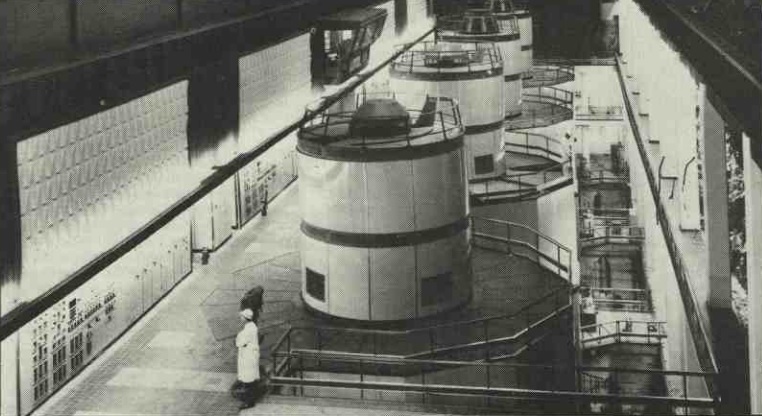
North of Scotland
In Scotland, the northern Super Grid progressed and was marked by upgrading 100 miles of existing overhead lines from 132,000 volts to 275,000 volts. The Super Grid backbone now extended from Fife to Invergordon via Dundee and Aberdeen. However, the Board faced rising costs and turned to administrative cuts resulting in employee numbers being reduced.
Image: Inside Cruachan power station
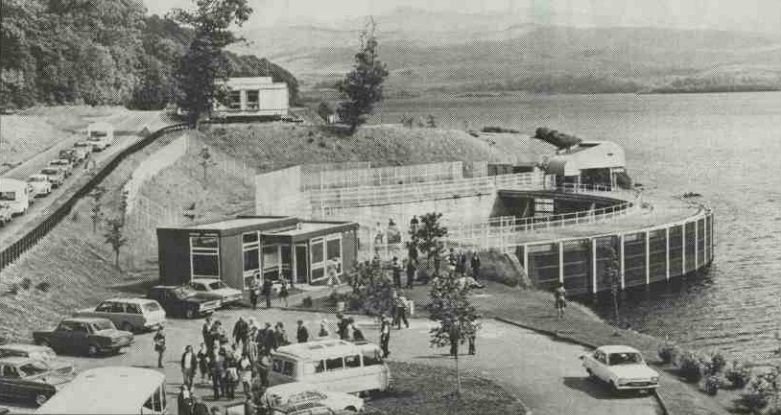
Reliable Hydro
The value of hydro generation was demonstrated following an incident in early 1971 which led to the National Grid losing 1,000MW of generating capacity at a large thermal station. Within 7 minutes, Cruachan pumped storage hydro was generating an output of 400MW, followed 8 minutes later by conventional hydro, which picked up another 350MW of output while continuing to meet normal demand at that time. A further request for 100MW was met 15 minutes later.
Image: View of outside Cruachan power station

Peterhead approved
While hydro generation was at its peak, investigations began into contingency plans for an oil/gas fired station near Peterhead. Two years later, and after careful consideration of the environmental impact, Peterhead power station was approved.
Image: View of Peterhead construction site
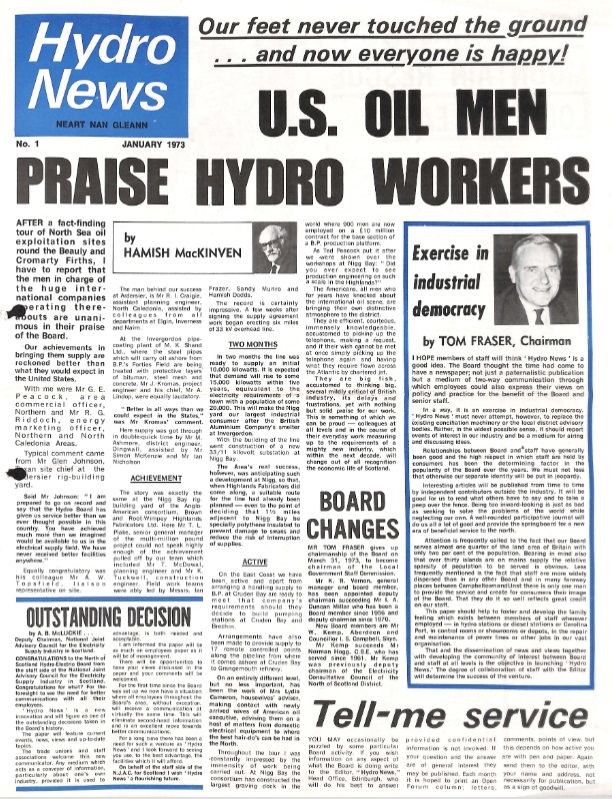
70s modernisation
By the mid-1970s the Board's shops had been modernised and appliance sales soared past £3m for the year. The 70s also saw colleagues being treated to the first edition of the new staff newspaper – Hydro News. Also, in operation was 140km of submarine cables with new and upgraded links in Orkney and Shetland. Foyers Power Station came online bringing NoSHEB’s total generating capacity to 2,150MW.
Image: First edition of Hydro News – Jan 1973
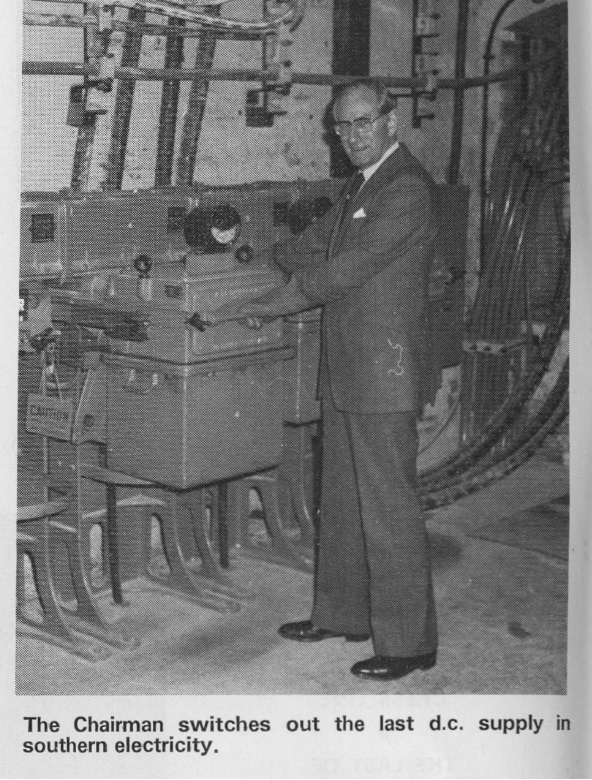
South of England
The 70s got off to a challenging start in the south when the Board announced tariff increases to bridge an annual loss of £3m, a huge change from the previous year when they had announced profits of £8m.
Three years later, that loss fell to £1.25m as the Board celebrated its 25th Anniversary. Still, the population in the south remained relatively affluent and the Board sold more electrical appliances than any other Area Board.
In the mid-70s electricity consumption was disrupted by industrial unrest, the 3-day week and the cost of fuel, resulting in the Board reporting an unprecedented trading loss of £24m.
Recognising the hardship faced by consumers; the Board introduced a "pay as you go" scheme, where payments could be made the local Board shop. Finances remained tight for the next few years until 1977 when the Secretary of State approved another tariff increase bringing the Board out of the red.
Later that year the new white meter tariff was introduced to help consumers take advantage of off-peak rates and more encouraging signs came from a large increase in housebuilding with the Board connecting on average, 30,000 new homes each year.
Ahead on Electric Vehicles
The Board's Chairman, John Wedgewood, introduced 22 new electric vehicles into the fleet. Another eight were ordered following the 1979 oil crisis, making the project the largest operational fleet of high-performance electric vehicles in Europe at that time.
Blizzards affect supply
Snowstorms impacted the south once more in 1978, with help drafted in from the armed forces.
Finally, the decade ended on a high when the last DC supply in the Board's area was switched off.
- 1980s
Technology takes its place
Both Boards become more reliant on technology to drive their businesses forward and industry changes create more opportunity to look to a brighter future as privatisation beckons
Image: Launch of new hydro-electric brand

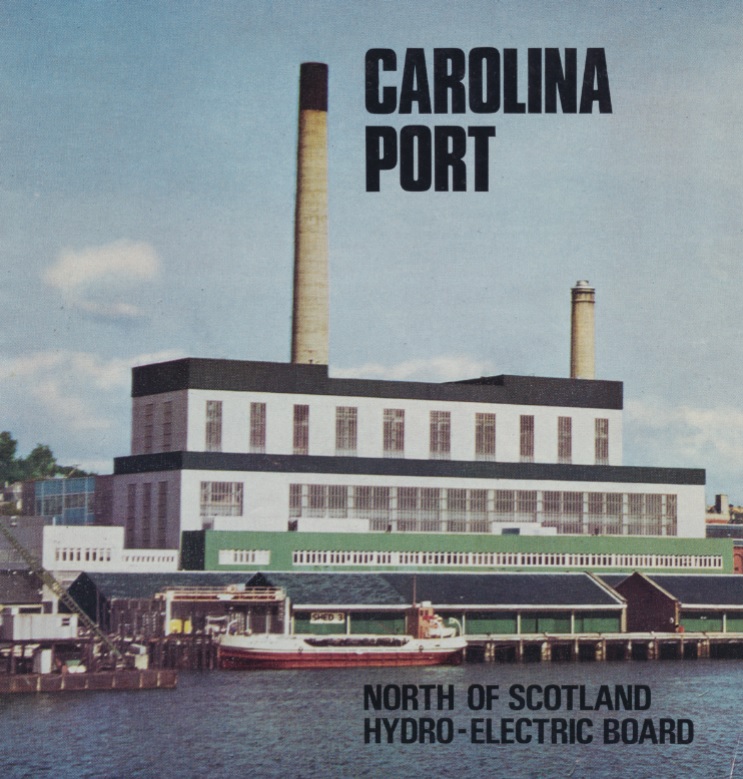
North of Scotland
NoSHEB kicks off the 1980s with the installation of high-speed data links from the Computing and Accounting Centre in Aberdeen to offices and power stations.
It wasn’t all good news however, as soaring oil prices impacted the Board's Carolina Port and Peterhead power stations with their combined consumption peaking at over 87,000 tonnes, ultimately leading to the closure of Carolina Port in October 1982.Image: Carolina Port
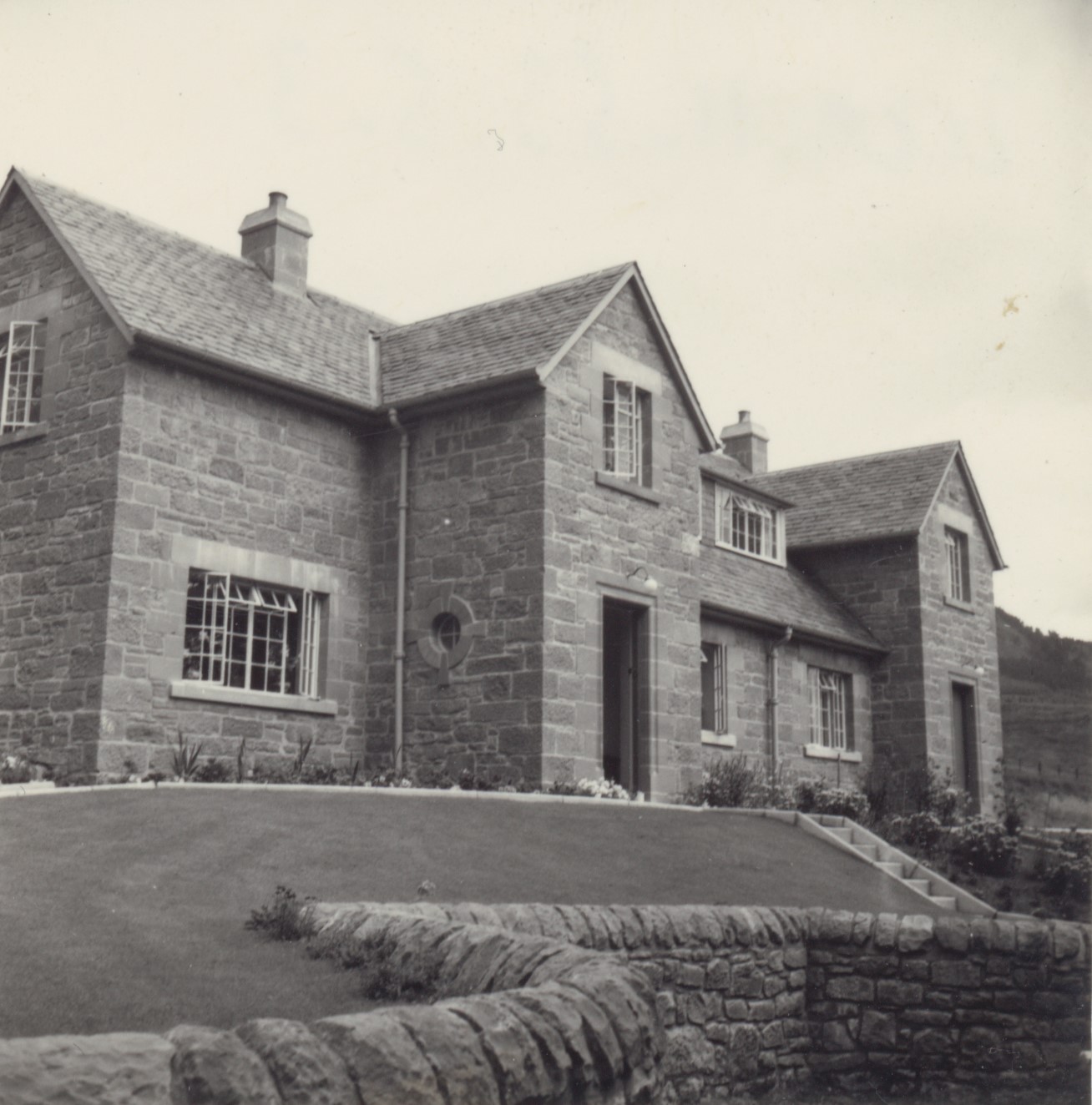
Peterhead development continues
Work at Peterhead did however move ahead, with transmission works completed to erect heavier towers to increase their power rating and the station eventually became operational.
The Board had 360 houses, designed to accommodate staff in areas of housing scarcity, and following a review of operational requirements it was decided that the Board would now dispose of 60 of these houses.
Image: Pitlochry staff houses 1950s
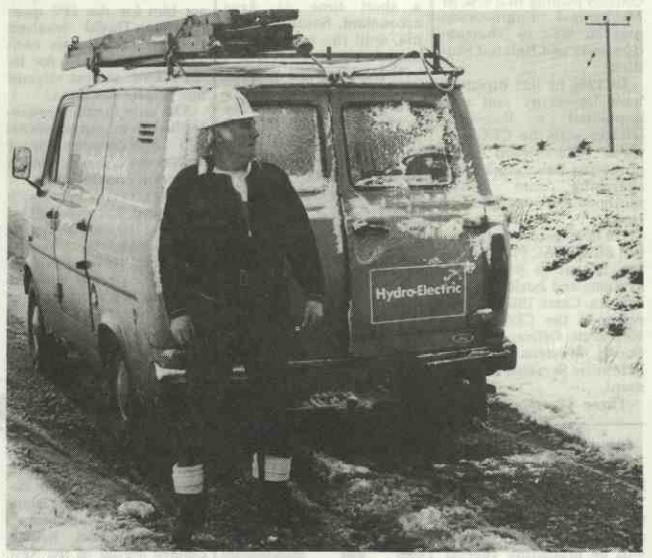
New research and policies
It was a busy time for studies, with research into wave energy ongoing and a feasibility study into run of river hydro generation showed that it could be economically viable, so the Board decided to promote two schemes on the Grudie and Talladale rivers. Studies around fish behaviour and Borland lifts was also under way with a new prototype counter put in place to aid accuracy.
In preparation for Privatisation, 1986 saw the introduction of a new more contemporary red and blue 'Hydro-Electric' branding.
The Board reviewed its Equal Opportunity Policy which now included the consideration of applications from disabled people. It also stated that no one should be unfairly treated because of their sex, marital status or race.
Storms cut power
January storms in 1983 and 1984 brought significant storm damage again. Around 250,000 consumers were affected in and around Aberdeen in 1984, when conductors on the 275kV lines clashed due to hurricane winds. The same storm caused significant loss in Skye when 10,000 consumers lost supply due to the collapse of a tower.
Image: Worker with van in snow during storms 1983/84
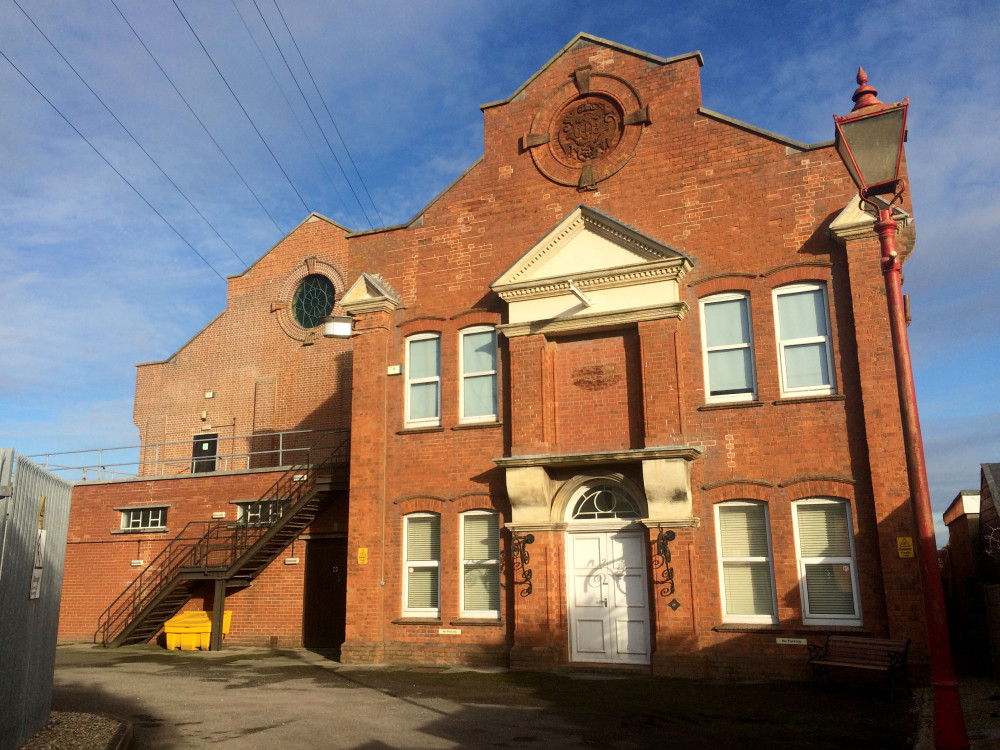
South of England
In 1981, the centenary of the world’s public supply of electricity in Godalming, John Wedgewood, the Board's Chairperson, opened the Southern Electric ‘Museum of Electricity’ in a 1904 power station in Christchurch, Dorset. The Museum remained open until 2012 when it became a Storage Facility for the valuable collection of early electrical artefacts.
Image: The Old Power Station, Christchurch
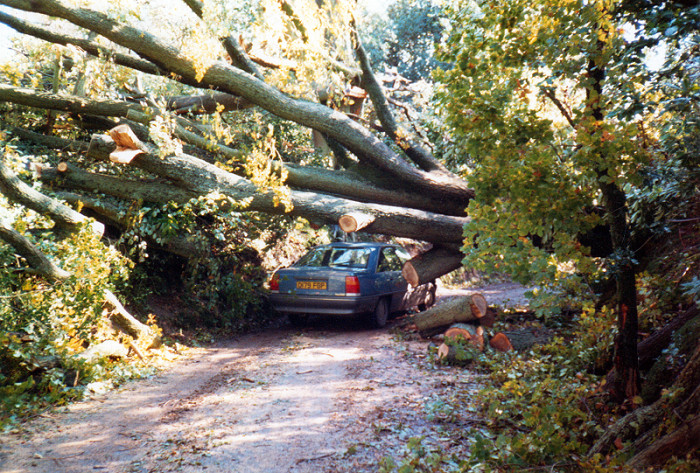
John Wedgewood continued his pioneering works in 1983 when he orchestrated a programme to create employment opportunities across the Boards for soldiers returning from the Falklands war. Further community support was provided in 1986 when the Board held open days during 'Industry Year'. Nine district offices opened their doors, with 3,500 visitors attending across the sites.
By the mid-1980s the SEB vehicle fleet numbers reached 3,300, which was second only to the Post Office at the time. In 1985 one of Southern Electric's Sherpa electric vehicles was involved in Britain's first ever EV motorway crash. The vehicle proved its robustness when both it and driver went on to continue their journey home.
In 1987 devastating storms hit Southern Electric's region with overhead lines damaged at 17,000 locations. Almost half a million households lost supply and 1,500 poles were replaced in one week alone. All hands were on deck with staff members’ families helping to deliver hot meals throughout the crisis.
Image: Storm damage 1987

And finally, in 1989 as privatisation loomed, the SEB began to trade as "Southern Electric" and changed its branding to blue and ochre on a silver background.
Image: Southern electric logo
- 1990s
Energy’s defining decade
Privatisation and consolidation of the sector heralds a new age of investment and innovation – and the merger that grew into the SSE we know today.
Image: Cover of first nrg staff magazine

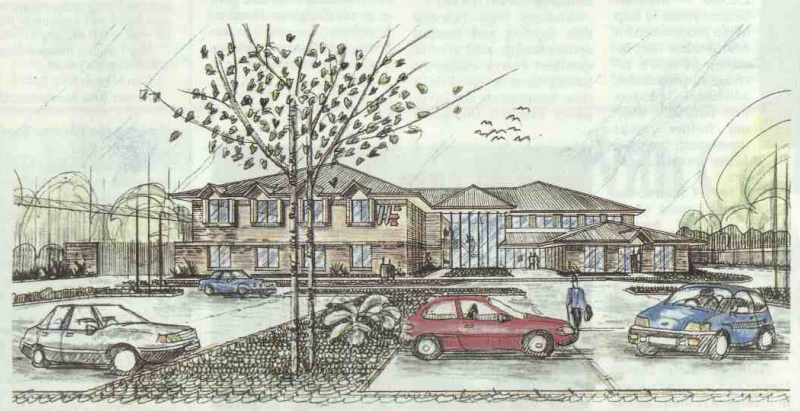
North of Scotland
In a decade that celebrated the 50th anniversary of NoSHEB's existence, considerable changes were on the horizon, not least most of the property, rights, and liabilities of NoSHEB being vested into the new Scottish Hydro-Electric plc as it was now to be known.
In 1990 Hydro-Electric provided more electricity from renewable sources than any other provider in the UK. This bolstered the desire to increase generation access to the South and Welsh markets and together with Scottish Power plc, investment was made to refurbish and increase the capacity of the South / Scotland interconnector.
Image: Artist impression of new HQ in Perth
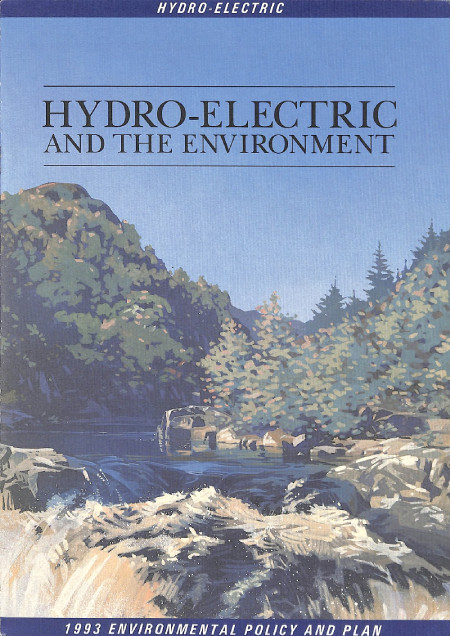
South of England
A New HQ and environmental policy
Meanwhile central business functions relocated from Edinburgh to the new Head Office in Perth which was to become a central location for the new Scottish Hydro-Electric. In 1993 the Company's first Call Centre was put into operation and building investment was ongoing with a new Training School in Dundee.
Concern for the environment had become a matter of increasing importance and in 1993 a new Environmental Policy was published outlining specific targets for each part of the business.
Image: 1993 Environmental policy and plan
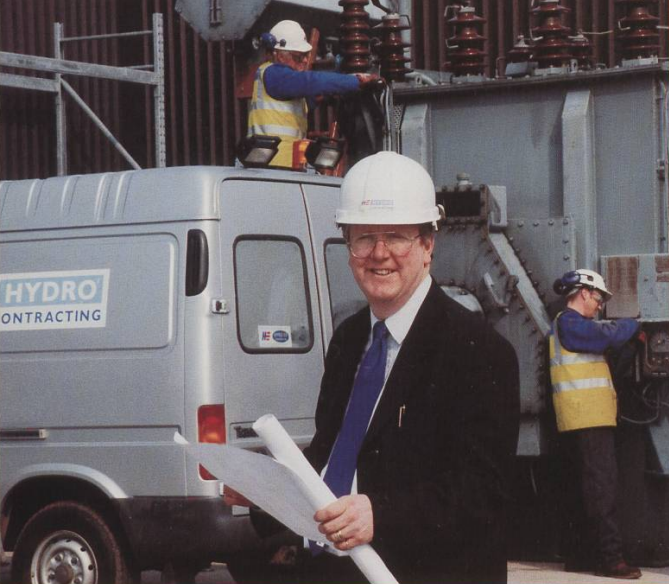
Innovative ventures
Many new ventures were embarked upon throughout the 1990s: EPOS systems were introduced into retail shops; a new Total Control heating system was launched; Scottish Hydro-Electric gained 100% ownership of Keadby power station and by 1998 generation capacity owned or under long-term contract was 3,242MW in Scotland and 849MW in England and Wales.
In 1998, the Power Systems business in the north of Scotland delivered electricity for all licensed suppliers across 25% of the British landmass where just 2% of the population lived and a refurbishment investment of £47.1m was made to upgrade approximately 1,000 miles of distribution wires.
Image: New hydro-contracting business launched

End of the Century
The decade drew to a close with the launch of Scottish Hydro-Electric Contracting business which operated across Scotland. The Company had also invested £7m during this time to safeguard itself from any Millennium Bug issues.
Image: Scottish Hydro Electric logo

South of England
On 31 of March 1990 Southern Electric plc inherited the business of the Southern Electricity Board, primarily encompassing the distribution and supply of electricity. By way of celebration, staff were invited to join a share incentive scheme with 97.4% of them signing up.
Later in that year the Company invested hugely in a new appliance warehouse. It replaced six stores and was computer linked to all retail shops to allow delivery timescales to be agreed on the day of purchase.
Investment in the Environment
The 1990s was to see another wave of investment in the environment with a number of initiatives to restore storm damaged woodlands with the planting of new trees.
Around this time, the Company commissioned a study to be undertaken to explore potential renewable projects. The study included the development and commercialisation of technologies such as energy crops, farm or municipal waste, landfill gas, small hydro as well as wind and solar.
Image: Tree planting efforts

Expansion and acquisition
The mid 1990s was to become a time for expansion with set-up of the new Southern Electric Contracting Business.
Not long afterwards, the acquisition of Thermal Transfer (Holdings) Ltd was completed. TT brought specialism in the form of design, installation, and maintenance of environmental control systems. And, in 1993 a three-year major investment was made to develop a fully integrated customer computer systems with IBM.
Southern Electric's Transmission and Distribution businesses were merged into a single Power Systems function with significant benefits being made in efficiencies.
‘Hot Hand’ technique
Later that year Southern Electric was to be the first electricity company to pilot a new method of working on high voltage schemes. The new 'hot hand' technique allowed suitably protected staff to work on high voltage equipment without disconnecting customers.
Image: Demonstration of 'Hot Hand" technique
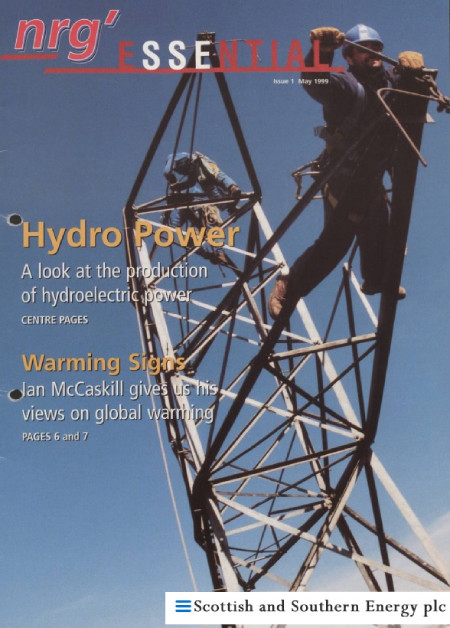
The partnership begins
Scottish and Southern Energy emerged as one of the top five energy companies in Britain following the no-premium merger of Scottish Hydro-Electric and Southern Electric on 14 of December 1998.
Image: Cover of first nrg staff magazine

Later that year a new internal communication channel was launched under the banner 'nrg' bringing together previous Southern Electric and Scottish Hydro-Electric versions.
By the end of the decade the Scottish and Southern Energy Group was marketing under the brand names Southern Electric and Scottish Hydro-Electric in their respective areas. And, responding to the opportunities presented by the opening of the energy markets, a number of new services, including, Southern Electric Gas, Scottish Hydro-Electric Gas and partnerships with Argos, Airmiles and a green tariff, Acorn, were all established.
Image: Partnership between Argos and Southern Electric
- 2000s
Diversification and growth
Acquisitions reshape the Group’s energy mix and, crucially for what is to come, build the Company’s developer capability in renewables


2000s
Focus on renewables
As the largest generator of renewable energy in the UK, Scottish and Southern Energy embarked on a £450m programme of investment in renewables, of which £250m was allocated to the refurbishment of hydro power stations and £200m ring-fenced to develop over 200MW of new renewable assets. This investment included a feasibility study into using the Beatrice Oil Field infrastructure in the Moray Firth as a hub for a large offshore wind farm.

Powerful expansion
Growth of the energy supply business came in the form of a successful integration of the SWALEC energy business. Further growth came with the purchase of Hornsea Gas Storage Business, Medway Power Station, and coal-fired power stations Ferrybridge and Fiddler's Ferry.
Image: Ferrybridge power station, Yorkshire

And more good fortune came in the form of Ofgem's approval to replace the Beauly-Denny transmission line and planning permission secured for a wind farm in South Ayrshire (Clyde) and the Glendoe hydro scheme close to Fort Augustus. And the gas business was also expanding with a 50% ownership of Scotia Gas Networks (SGN) which operated 73,000km of gas mains and delivered gas to 5.6m.
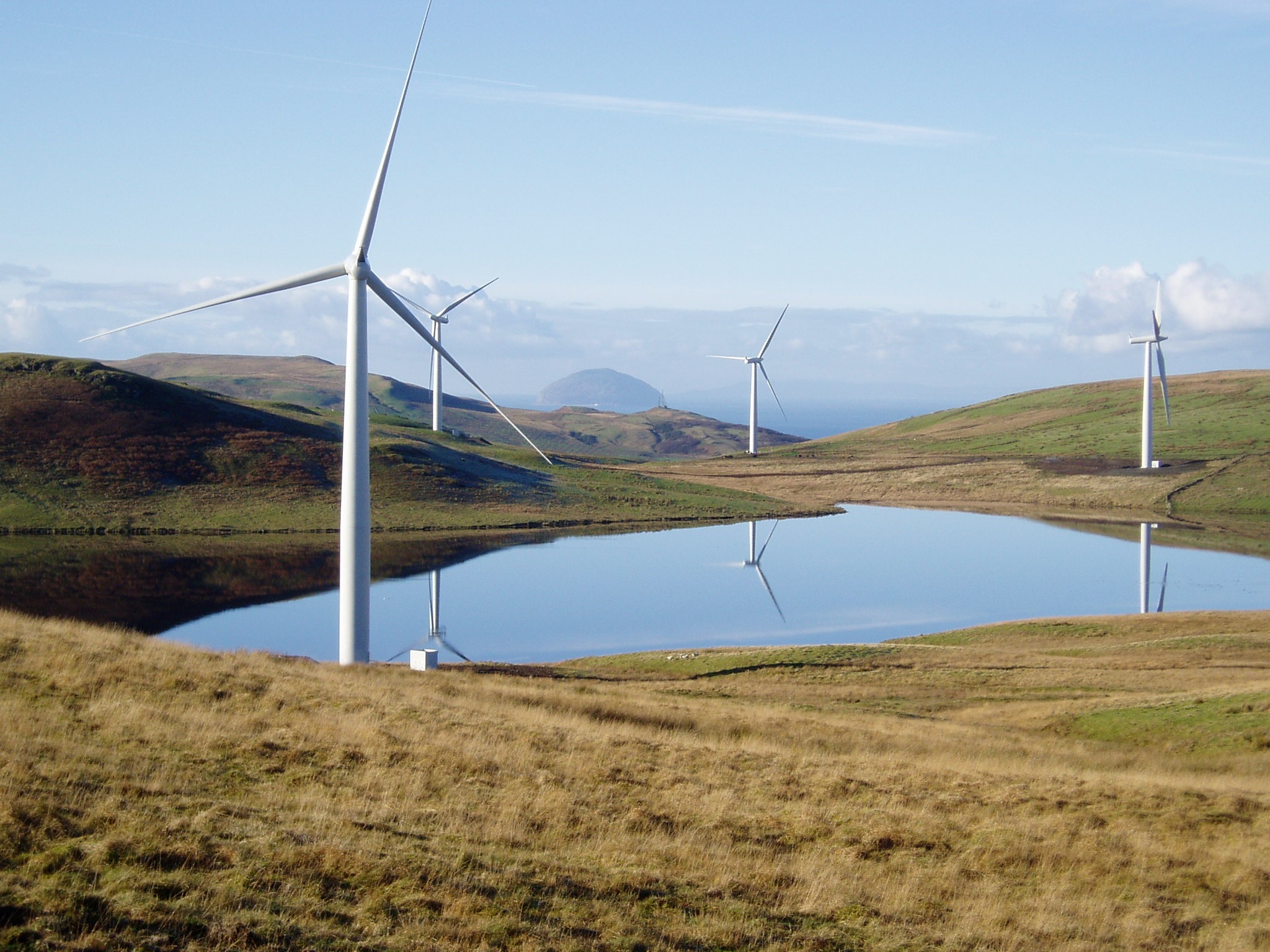
Colleagues, meanwhile, responded to a humanitarian crisis in 2005 when they raised £25k for victims of Asia's Tsunami – the amount was then matched by SSE bringing the total to £50k.
In 2006 Hadyard Hill, the first wind farm in the UK to generate over 100MW, was completed. And more firsts followed later that year with Ferrybridge power station being the first in the UK to co-fire fuel from renewable sources (biomass) with Fiddler's Ferry following soon afterwards.
2008 brought about more growth when the Company completed the acquisition of Airtricity adding 110GWh from 10 wind farms in the Republic of Ireland and seriously bolstering the Company’s wind development capability.
Image: Clyde wind farm

UK’s largest generator of renewable energy
A year later following the completion of the Glendoe 100MW hydro electric scheme, SSE owned 10,700MW of electricity generating capacity in the UK and Ireland making it the UK's largest generator of renewable electricity as well as it having the most diverse mix of fuels.
Image: Opening of Glendoe power station
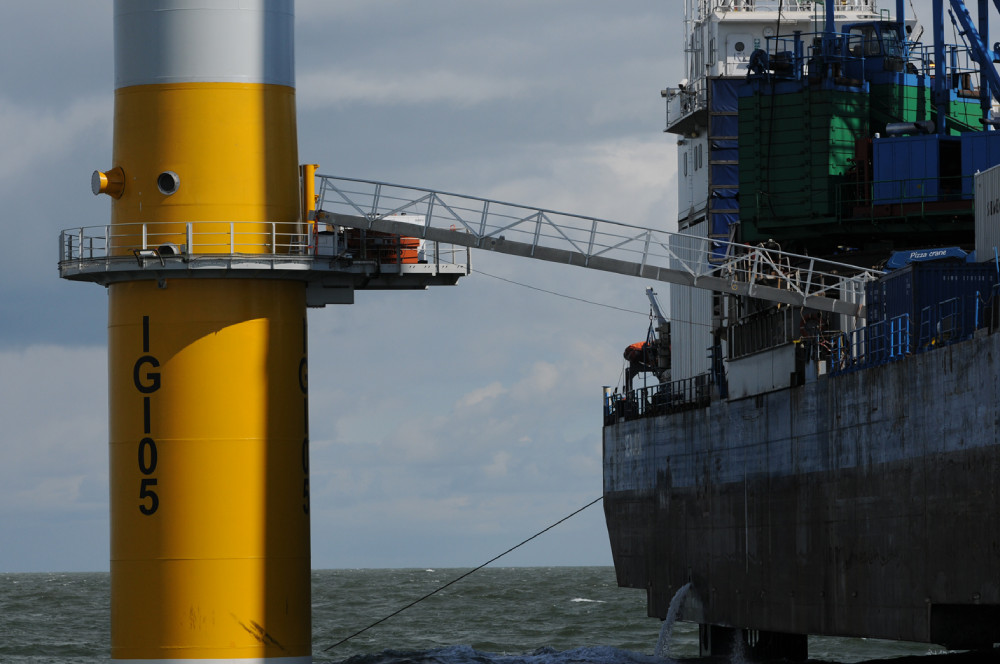
2000s at a glance
In the same year, construction started at Clyde and Griffin wind farms along with the start of offshore construction work at Greater Gabbard.
As the decade drew to a close, the Group:
- employed 18,795 people
- supplied electricity and gas to over 9m domestic, commercial and industrial customers in GB and 50,000 customers in the Irish all-island market.
- was the second largest supplier of energy in GB
- traded under the Southern Electric, Scottish Hydro-Electric, Atlantic and (in Ireland) Airtricity brands, and
- distributed electricity to over 3.5m properties in northern Scotland and central Southern England via overhead lines and underground cables.
Image: Offshore wind turbine construction at Greater Gabbard
- 2010s
A clean energy champion
As the scale of the climate challenge becomes clearer, SSE reorganises itself to take the lead in decarbonising the energy system.
Image: SSEN worker inspecting storm damage

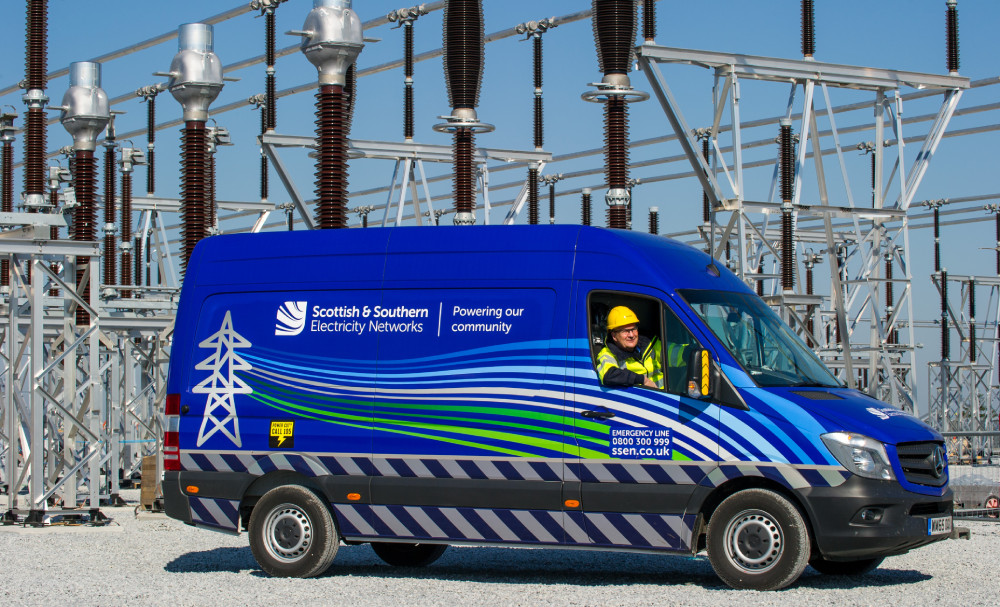
2010s
A recharged brand
Scottish and Southern Energy plc was officially renamed to SSE plc and a new look brand followed in April 2014. This was complimented by the Company’s first-ever national television advertising campaign featuring Maya the orangutan. SSEPD (Scottish and Southern Energy Power Distribution) delivered its largest ever customer communications campaign and in 2016 rebranded to Scottish and Southern Electricity Networks.
Image: New branding on SSEN vehicles
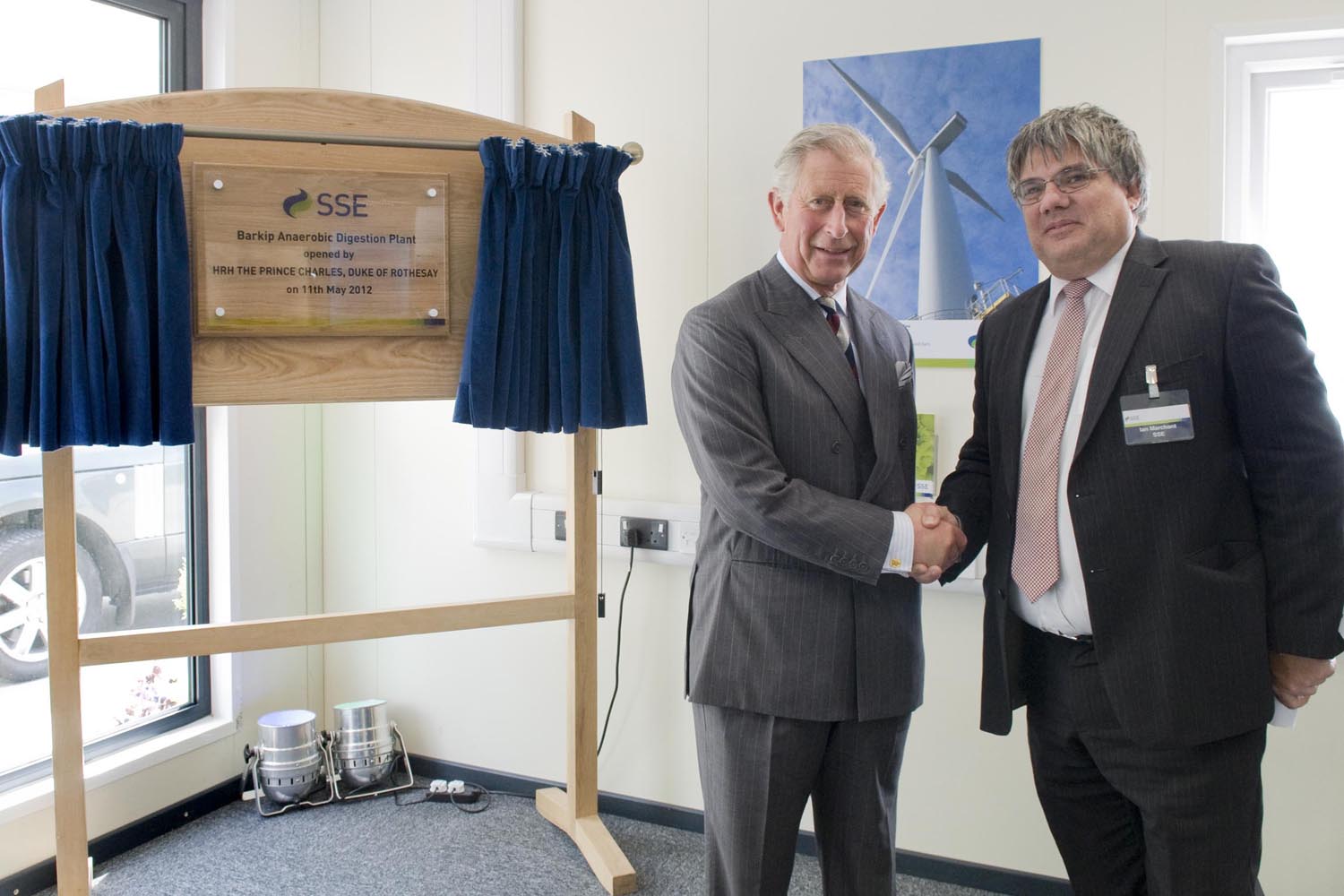
Sustainable development
After a brief foray into nuclear power development, the decision was made in 2012 to sell SSE’s stake in NuGeneration Ltd. Around the same time SSE was the first energy company in the UK to commit to the construction and operation of an anaerobic digestion biogas plant at Barkip in North Ayrshire. The opening of Clyde wind farm marked the Company’s position as the largest generator of electricity from wind across Great Britain and Ireland, with onshore wind farm capacity exceeding conventional hydro-electric capacity for the first time. A new 25-year Sustainable Development Fund to support communities impacted by construction of renewables projects was launched in 2013/14.
Image: Opening of Barkip anaerobic digestion biogas plant
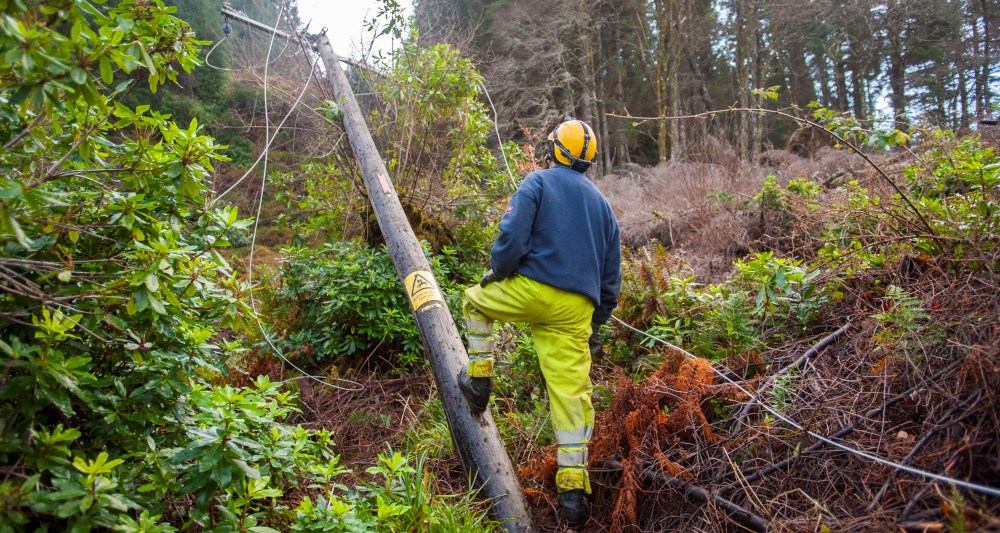
Battling the elements
SSE’s electricity network was subjected to the effects of severe weather on an unusually large scale. January 2012 saw the North of Scotland experience wind speeds of over 90MPH resulting in the loss of power to around 40,000 households. The equivalent of three months of fault repair work was carried out in four days. Two months later saw extreme snow fall and ice in the West of Scotland which inflicted unprecedented damage on the electricity network on Arran and Kintyre.
Image: SSEN worker inspecting storm damage

Setting the standard
In 2013 SSE became the largest company in the FTSE to become a Living Wage employer and the first FTSE100 company to be awarded the Fair Tax Mark accreditation.
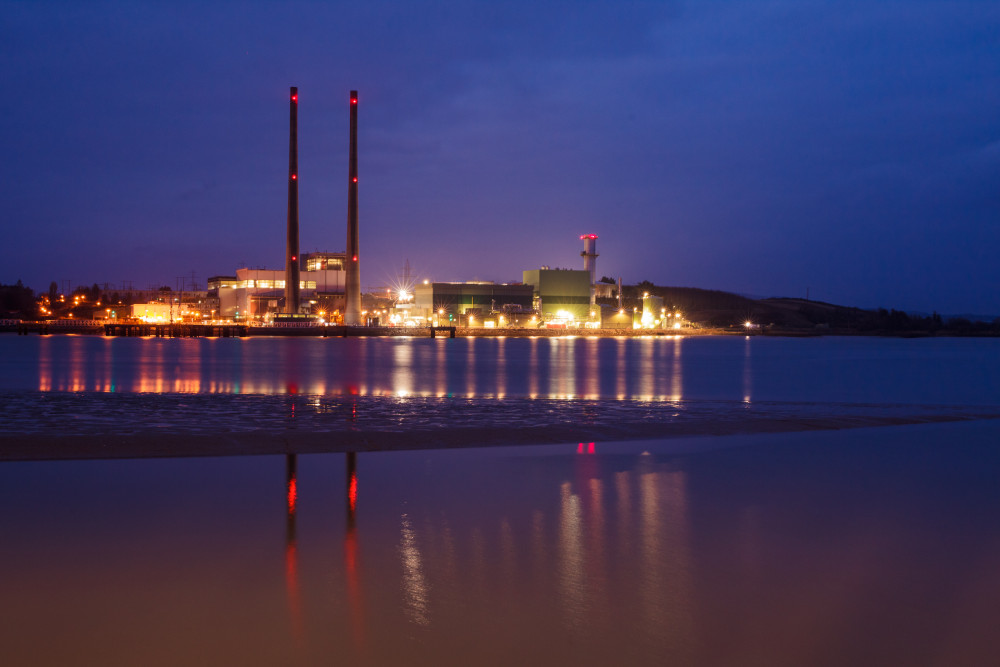
Powering Irish homes
In Ireland, the Combined Cycle Gas Turbine (CCGT) power station at Great Island, Co. Wexford entered into full commercial operation in April 2015 and generated enough clean, efficient energy to power the equivalent of half a million Irish homes.
Image: Great Island CCGT power station
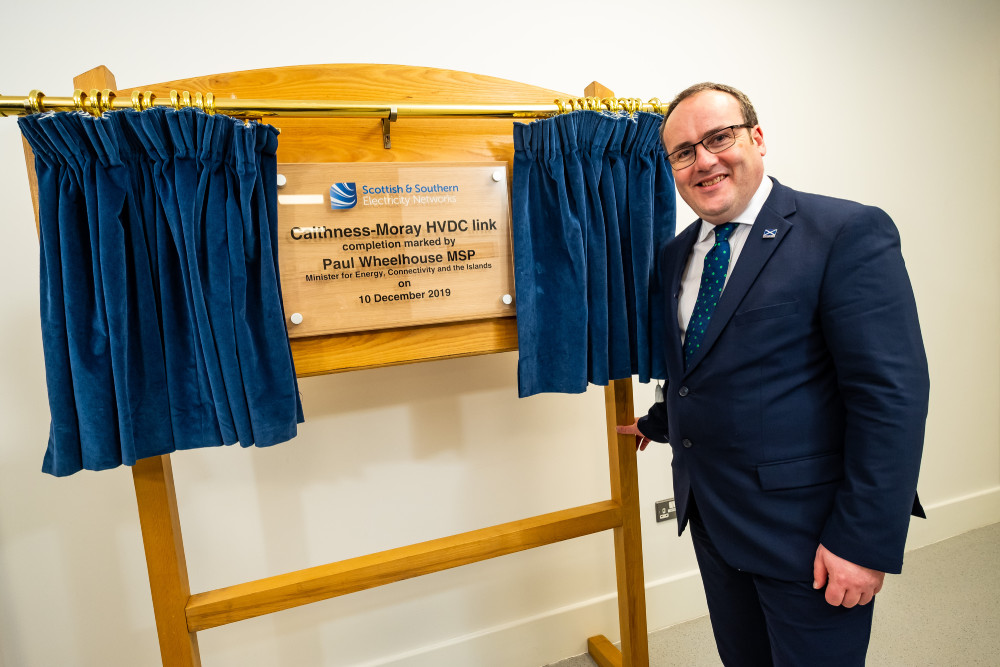
Celebrating clean energy
The decade was to see around 20GW of the UK’s capacity for generating electricity (largely coal, oil and nuclear) scheduled to close because of its age or its inability to comply with higher environmental standards. SSE made the decision to cease coal-fired electricity generation at Ferrybridge and a period of decommissioning was entered into in 2016.
The replacement Beauly-Denny 400kV overhead line was energised in November 2015 and the following year was a record for SSEN with over 500MW of renewable electricity connected to the network.
2016 also saw the investment of £4m in a new purpose-built visitor centre at Pitlochry dam celebrating renewable energy and hydro heritage. This was officially opened by the First Minister of Scotland, Nicola Sturgeon, in February 2017, who was joined by some of the original Tunnel Tigers who lived and worked on the schemes during construction.
Image: Opening of Caithness -Moray HDVC link
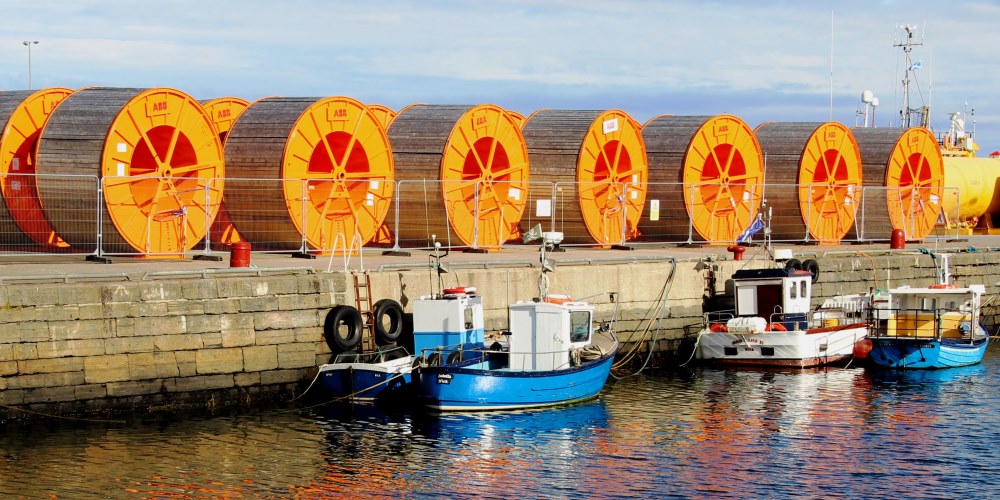
A decade of renewables success
Responding to the challenge of increasing workforce diversity, SSE began to target a series of actions around gender diversity. Whistleblowing procedures were also improved and steps were taken to ensure that modern slavery and human trafficking was not present in SSE’s business or supply chain whilst also establishing a new policy on Human Rights, based on the UN Global Compact, which they became a signatory of in 2018.
Diversifying our workforce
Towards the end of the decade SSE had lots to celebrate including: 75 years of hydro power in Scotland; 70 years since the formation of the Southern Electricity Board; 20 years since the merging of Scottish Hydro Electric and Southern Electric and 10 years since the acquisition of Airtricity, the Irish electricity generator and supplier.
2019 saw the appointment of the first Chief Sustainability Officer, reporting directly to the Chief Executive – one of only a small number of FTSE 100 firms to do so.
SSE’s Transmission business completed the construction, commissioning and energisation of the new Caithness-Moray electricity transmission link in January 2019. With an agreed allowance of £1.1bn from Ofgem, the project was the largest single investment undertaken by any part of SSE to date.
Image: Cable drum deliveries

Launch of SSE Renewables
SSE consolidated its renewable energy assets in the UK and Ireland and from April 2019 it began operating under the banner of SSE Renewables. Beatrice became the largest offshore wind farm off the coast of Scotland when it became fully operational in June 2019.

The climate change mission
Major structural change began to refocus the Group on developing, building, operating, and investing in the renewables and electricity networks infrastructure needed to tackle climate change. As part of this, SSE sold its GB retail energy supply business to OVO Energy Limited in 2020.
Image: Greater Gabbard offshore wind farm

